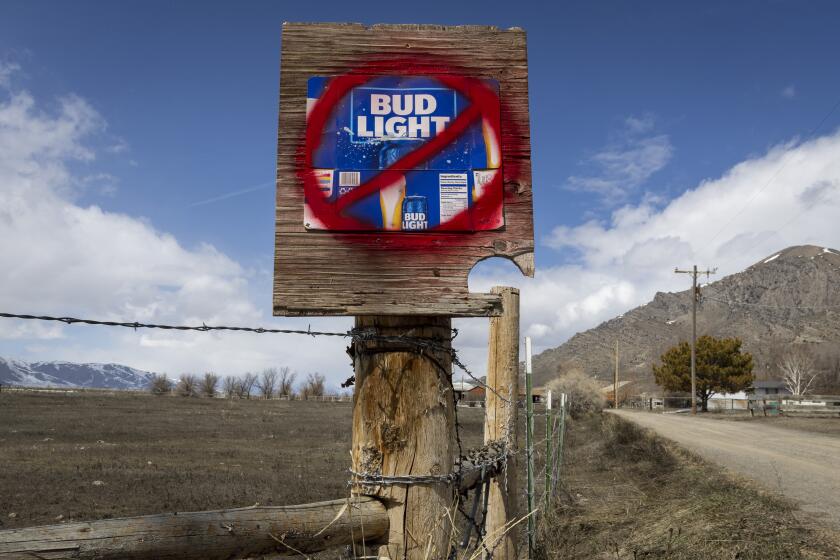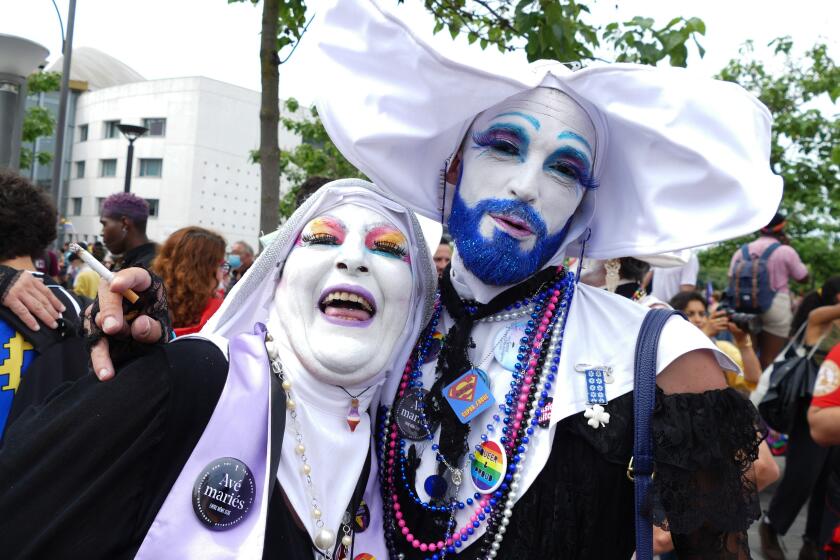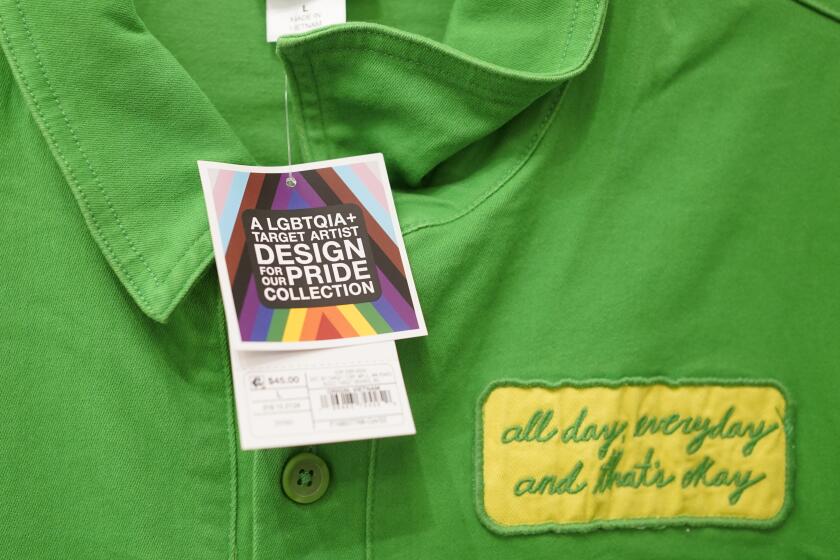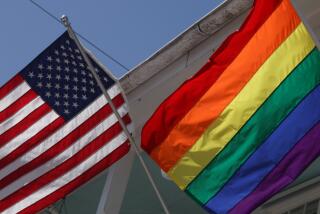Column: Thereâs a reason for the anti-LGBTQ+ backlash. And it isnât all bad news
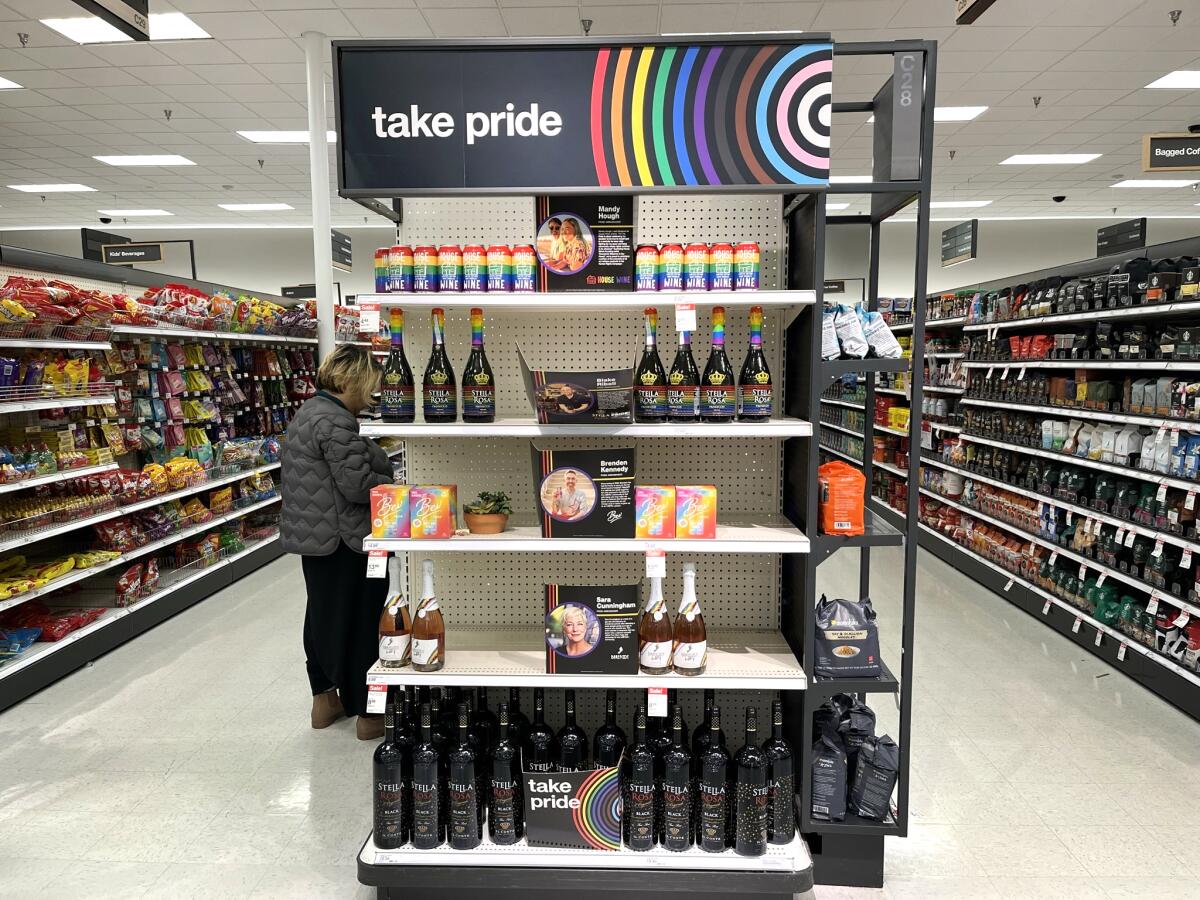
Confederate flags offend me.
They represent the violence of slavery and nostalgia for a white supremacist past.
Assault weapons offend me.
They represent death and destruction and the moral bankruptcy of politicians willing to sacrifice American children on the altar of the 2nd Amendment.
But rainbow colored T-shirts, dresses and baby rompers? Greeting cards that say âIâm happy that youâre queerâ? Who could possibly be offended by items that celebrate and affirm the rights of gay and trans people to simply live in peace?
Yeah, I know: a bunch of people.
As we have seen recently, in boycotts against slightly enlightened corporations such as Anheuser-Busch InBev and Target, there is a concerted effort, led mainly by conservative Christians, to punish businesses that embrace the LGBTQ+ community. Anheuser-Busch found itself in the crosshairs when transgender influencer Dylan Mulvaney promoted Bud Light on their social media feeds during March Madness.
Target ticked off the forces of intolerance with its annual Pride Month display of merchandise, although itâs been putting up rainbows at the end of May for more than a decade.
Bud Light sales have plummeted; the company didnât apologize but backtracked, saying it never âintended to be part of a discussion that divides people.â
The beer boycott tanked Bud Lightâs sales and stock price. But âanti-wokeâ activists donât need that kind of payoff to keep stoking LGBTQ+ outrage.
Target said the backlash has endangered its employees and removed some items from shelves. In some stores, the retailer said, Pride displays were relocated from the front to the back. Its stock has taken a hit.
A rapper whose grotesque facial tattoos would scare the living daylights out of any child I know has dropped a music video claiming that âTarget is targeting our kids.â
âYou know they cutting these kids,â raps Forgiato Blow, âthey leaving trannies with scars.â
Itâs remarkable how he was able to pack so much ignorance and disdain into one sentence.
Even in our own generally liberal community, some parents at Saticoy Elementary School in North Hollywood made waves last week when they urged families to âkeep your children home and innocentâ rather than subject them to a Gay Pride and Rainbow Day Assembly on Friday.
The Dodgers invited, disinvited, then reinvited the Sisters of Perpetual Indulgence, a drag/charity group that calls attention to religious intolerance, to be honored at the teamâs June 16 Pride Night game.
The Dodgers responded to criticism for their decision to exclude the Sisters of Perpetual Indulgence from their June 16 Pride Night by reversing course.
Why are we stuck in the middle of a moral panic about sexuality and gender identity? Why now?
According to the Associated Press, nearly 500 anti-LGBTQ+ bills have been introduced in state legislatures this year. At least 17 states have passed laws that restrict or ban gender-affirming care for transgender minors.
Itâs happening because ginning up fear about the âcorruptionâ of children is a tried and true technique for rallying the far right.
Because same-sex marriage is legal and transgender people have made extraordinary strides.
Because the Christian right needed a new bogeyman after the Supreme Court overturned Roe vs. Wade, neutralizing an issue that has animated the Republican base and turned out votes for decades.
Because Americans have grown relaxed about the LGBTQ+ community. A 2020 survey conducted by GLAAD, an LGBTQ+ advocacy group, and Procter & Gamble found that 75% of people who do not identify as gay or trans or queer â that is, a supermajority â were comfortable with seeing non-straight folks in marketing campaigns.
Target once distinguished itself as being boldly supportive of the LGBTQ+ community. Now itâs under fire for removing and hiding Pride Month displays in certain Southern locations.
And, last but hardly least, itâs happening because the number of Americans who do identify as LGBTQ+ has exploded. A February Gallup poll based on the aggregated data of 10,000 people found that nearly 20% of Generation Z, those born between 1997 and 2004, identified as LGBTQ+. By comparison, only 2.7% of Baby Boomers identified that way.
This change is astonishing and proof that the stigma so long attached to gay, nonbinary and transgender people may finally be starting to fade away. Cue the backlash.
The idea that being frank with kids about the range of human sexuality and gender, or that discussions about families that have two moms or two dads is somehow stealing the innocence of children, is ludicrous.
As the guardian of a middle-schooler, I can tell you that her peers have been discussing their sexuality and gender since third grade, maybe earlier. They are much more comfortable and open than previous generations about these matters. And although they can talk easily about being âbiâ or gender fluid, they donât equate those issues with actual sexual behavior, which is still too yucky to contemplate for elementary school kids and preteens.
In any case, itâs a mystery to marketing experts why the backlash against Bud Light and Target has become so intense. After all, in some ways, Pride Month â June â has long been co-opted by corporations looking for marketing opportunities. Walmart has a Pride line of merchandise. As do Bloomingdaleâs, Kohlâs, Hot Topic, Old Navy and even Michaels, the craft store. Campaigns for Leviâs have featured gay and trans people. J. Crew has displayed pride flags in its windows. On June 25, Coors Light is sponsoring a Pride Parade in Denver, something it has done for two decades.
It wasnât very long ago that companies were being pilloried by groups like GLAAD for showing their pro-LGBTQ+ colors only one month a year â âpink washingâ â or for donating money to fervently anti-LGBTQ+ politicians.
At this moment, when the bigots are on the march, those are starting to feel like the good old days.
More to Read
A cure for the common opinion
Get thought-provoking perspectives with our weekly newsletter.
You may occasionally receive promotional content from the Los Angeles Times.

